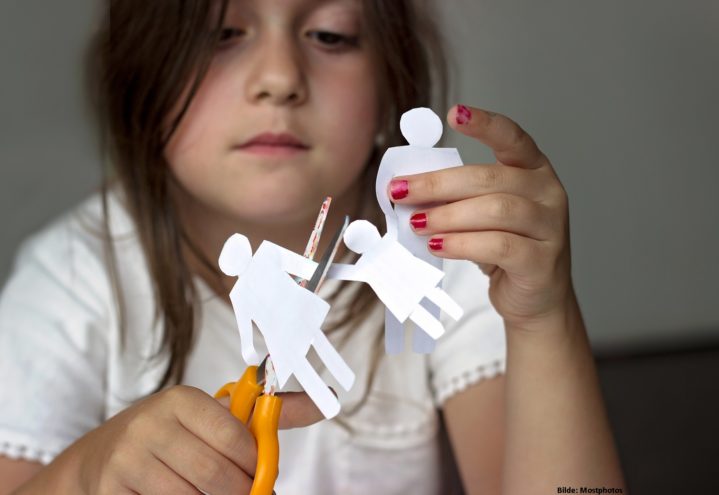Systematic review and classification of: Skilsmissegrupper
DOI:
https://doi.org/10.7557/25.6696Keywords:
Systematic review, Group-based intervention, Divorce, Family breakupAbstract
Background: Skilsmissegrupper is a promoting and preventive group-based intervention for children and adoles-cents, which are being delivered in school, primarily by the school health services. The main goal of the intervention is to give children who experience a divorce or a family breakup a place to meet other children with similar experiences. It is also an arena to talk to other than their parents about their situation and be more capable to cope with this (new) life-situation. The intervention was de-veloped early in 2000 by two school health nurses, and today it is run by the organization Voksne for Barn.
Methods: This review is based on a systematic literature search in the databases Embase, Medline, Psykinfo, NORART, Cochrane, Cristin, NORA, SCOPUS and SweMed. International databases on evidence have also been searched, as well as information about the intervention from the program provider. Re-sults from literature searches and the other information obtained were reviewed to identify Nordic effect studies, international systematic reviews, and eventually other Norwegian studies of the in-tervention.
Results: The results presented here is an overall assessment of the intervention`s description, available studies, and the quality of implementation. Skilsmissegrupper shows a satisfactory description of the intervention, built upon a known theoretical foundation. Further, this review is based on three qualitative studies which have explored both the youths and the group facilitators experiences with the intervention, as well as an evaluation report. However, there are no Nordic effect studies of the intervention, which makes it difficult to make any conclusions regarding the effect of the interven-tion.
Conclusion: Skilsmissegrupper is classified at evidence level 2 – Theoretically-based intervention.
References
Amato, P. R. (2000). The consequences of divorce for adults and children. Journal of Marriage and Family, 62(4), 1269–1287. https://doi.org/10.1111/j.1741-3737.2000.01269.x
Antonovsky, A. (1979). Health, stress and coping: New perspectives on mental and physical well-being. Jossey-Brass.
Bærum kommune. (2009). PIS-prosjektet 2004-2008. Forebyggende tiltak rettet mot barn og unge som har opplevd samlivsbrudd. Samarbeidsprosjekt skole/helse. Oppsummering og evaluering. Bærum kommune.
de Shazer, S. (1988). Clues: Investigating solutions in brief therapy. WW Norton & Co.
Egge, H., & Glavin, K. (2014). Hvorfor det hjelper ungdom å delta i skilsmissegrupper. Sykepleien Forskning, 9(4), 332–339. https://doi.org/10.4220/sykepleienf.2014.0173
Kelly, J. B., & Emery, R. E. (2003). Children’s adjustment following divorce: Risk and resilience perspectives. Family Relations: An Interdisciplinary Journal of Applied Family Studies, 52(4), 352–362. https://doi.org/10.1111/j.1741-3729.2003.00352.x
Langslet, G. J. (1999). LØFT. Løsningsfokusert tilnærming til organisasjonsutvikling, ledelsesutvikling og konfliktløsning. Gyldendal akademisk.
Lofthus, G. A. (2015). En kvalitativ studie om betydningen av PIS-skilsmissegrupper for barn som lever i skilsmissefamilier [Masteroppgave, Høgskolen i Stord/Haugesund].
Lofthus, G. A., & Skorpen, F. (2016). To be in between: The meaning of PIS-divorce groups for children from divorced families. Nordic Journal of Nursing Research, 36(3), 161–167. https://doi.org/10.1177/2057158516638275
Martinussen, M., Reedtz, C., Eng, H., Neumer, S. P., Patras, J., & Mørch, W. T. (2019). Ungsinn – Kriterier og prosedyrer for vurdering og klassifisering av tiltak v2.1 (2. ed.). Universitetet i Tromsø.
Nilsen, S. A., Hysing, M., Breivik, K., Heradstveit, O., Vingen Sunde, E., Stormark, K. M., & Bøe, T. (2019). Complex families and health complaints among adolescents: A population-based cross-sectional study. Scandinavian Journal of Public Health, 48(7), 733–742. https://doi.org/10.1177/1403494819893903
Raknes, S., Hansen, L. S., Cederkvist, G. A., & Nordgaard, N. (2017). Psykologisk førstehjelp i skole og skolehelsetjeneste. In L. G. Kvarme (Red.), Sårebare skolebarn (pp. 170–211). Vigmostad & Bjørke AS.
Reedtz, C., & Eng, H. (2013, November 13). Beskrivelse og vurdering av tiltaket: PIS – Program for implementering av samtalegrupper for skilsmissebarn. Ungsinn. https://ungsinn.no/post_tiltak/pis/
Rognerud, S. (2014). Samtalegrupper for skilsmissebarn: Gruppelederes erfaringer med gjennomføring og nytteverdi. En intervjustudie av helsesøstre [Masteroppgave, Universitetet i Oslo].
Statistisk sentralbyrå. (2021). Ekteskap og skilsmisser. https://www.ssb.no/befolkning/barn-familier-og-husholdninger/statistikk/ekteskap-og-skilsmisser
Størksen, I., Røysamb, E., Moum, T., & Tambs, K. (2005). Adolescents with a childhood experience of parental divorce: a longitudinal study of mental health and adjustment. Journal of Adolescence, 28(6), 725–739. https://doi.org/10.1016/j.adolescence.2005.01.001
Voksne for Barn. (2012a). Veileder for barneskolen. Samtaler for barn som har opplevd samlivsbrudd. Voksne for barn.
Voksne for Barn. (2012b). Veileder for ungdomsskolen. Samtalegrupper for barn som har opplevd samlivsbrudd. Voksne for barn.
Voksne for Barn. (2015a). Veileder for barnehagen. Samtaler med barn som har opplevd samlivsbrudd. Voksne for barn.
Voksne for Barn. (2015b). Veileder for videregående. Samtalegrupper for elever som har opplevd samlivsbrudd. Voksne for barn.

Downloads
Additional Files
Published
How to Cite
Issue
Section
License
Copyright (c) 2022 Lene-Mari P. Rasmussen, Øivin Christiansen, Charlotte Reedtz

This work is licensed under a Creative Commons Attribution-NonCommercial-ShareAlike 4.0 International License.

